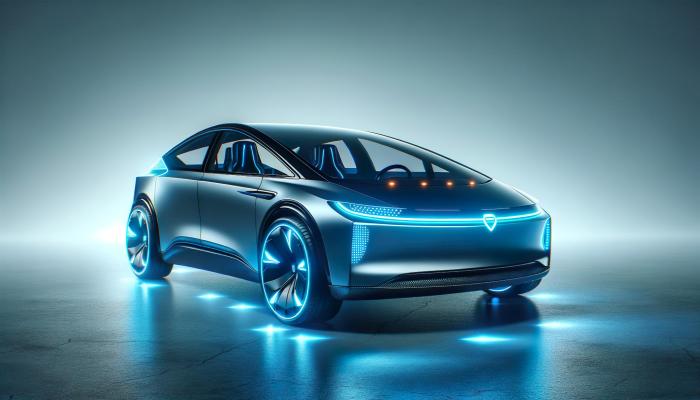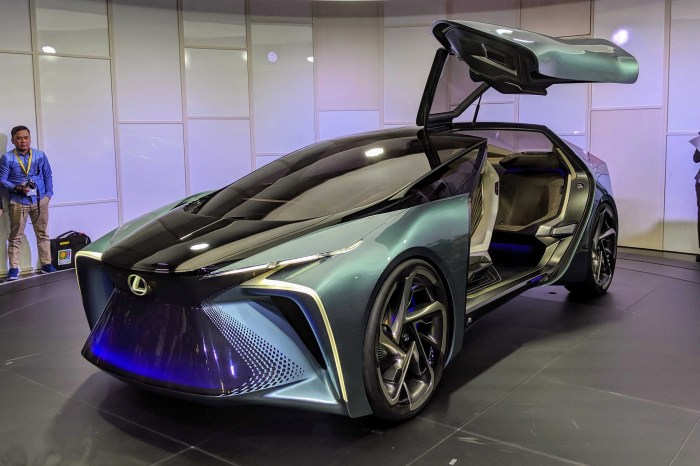When it comes to the world of transportation, electric vehicles (EV cars) have been making waves. From their environmental benefits to the cost savings, EV cars are changing the game in more ways than one.
Let’s dive into the realm of EV cars and explore the key aspects that make them a compelling choice for the present and the future.
Introduction to EV Cars

Electric Vehicles (EVs) are automobiles powered by electricity, using one or more electric motors for propulsion. These vehicles are becoming increasingly popular as the world shifts towards sustainable transportation options.
There are several benefits of using EV cars:
Environmental Impact
- EVs produce zero tailpipe emissions, reducing air pollution and greenhouse gas emissions.
- They help in combating climate change by decreasing reliance on fossil fuels.
Cost Savings
- Lower operating costs compared to traditional gasoline vehicles due to cheaper electricity prices.
- Less maintenance required, resulting in long-term savings for owners.
Performance and Efficiency
- Instant torque from electric motors provides quick acceleration and a smooth driving experience.
- Regenerative braking helps in recharging the battery while driving, improving energy efficiency.
When comparing EV cars to traditional gasoline vehicles, it is evident that EVs have a lower environmental impact, lower operating costs, and offer better performance and efficiency. As technology advances and infrastructure improves, the adoption of EV cars is expected to continue growing worldwide.
Types of EV Cars
Electric vehicles come in various types, each utilizing different technologies to power the vehicle. The main types of EV cars include Battery Electric Vehicles (BEVs), Plug-in Hybrid Electric Vehicles (PHEVs), and Hybrid Electric Vehicles (HEVs).
Battery Electric Vehicles (BEVs)
BEVs are fully electric vehicles that run solely on electric power stored in rechargeable batteries. These vehicles do not have an internal combustion engine, relying entirely on the electric motor for propulsion. BEVs need to be plugged into an electric power source to recharge their batteries. They offer zero tailpipe emissions and are environmentally friendly.
Plug-in Hybrid Electric Vehicles (PHEVs)
PHEVs combine an internal combustion engine with an electric motor and a battery. These vehicles can run on electric power from the battery, the internal combustion engine, or a combination of both. PHEVs can be charged by plugging into an electric power source, and they also recharge the battery through regenerative braking. PHEVs offer a balance between electric and gasoline power, providing flexibility for longer trips.
Hybrid Electric Vehicles (HEVs)
HEVs utilize both an internal combustion engine and an electric motor to drive the vehicle. Unlike PHEVs, HEVs cannot be plugged in for charging and rely on regenerative braking to recharge the battery. The electric motor assists the gasoline engine in improving fuel efficiency and reducing emissions. HEVs are ideal for city driving and short commutes.Overall, BEVs offer the longest range as they rely solely on electric power, followed by PHEVs that provide a balance between electric and gasoline power.
HEVs have the shortest electric-only range as they primarily use the gasoline engine for propulsion. Charging capabilities vary among the different types of EV cars, with BEVs requiring dedicated charging stations, PHEVs offering the flexibility of charging at home or public stations, and HEVs not needing external charging due to their self-charging capability through regenerative braking.
Environmental Impact
Electric vehicles (EVs) have a significant positive impact on the environment due to their lack of tailpipe emissions, which helps reduce air pollution and greenhouse gas emissions. By transitioning to EVs, we can mitigate the harmful effects of traditional gasoline vehicles on our planet.
Reducing Carbon Emissions
- EVs produce zero tailpipe emissions, eliminating harmful pollutants such as carbon monoxide, nitrogen oxides, and particulate matter that contribute to air pollution.
- Charging EVs with electricity from renewable sources further reduces their carbon footprint, making them even more environmentally friendly.
- Compared to gasoline vehicles, EVs have lower overall emissions even when considering the emissions generated during electricity production.
Charging Infrastructure
Having a robust charging infrastructure is crucial for the widespread adoption and success of EV cars. Without adequate charging stations, EV drivers may face range anxiety and limited options for recharging their vehicles.
Types of EV Charging Stations
There are different types of EV charging stations available to cater to the varying needs of EV drivers:
- Level 1: These chargers use a standard 120-volt household outlet and provide a slow charging rate, suitable for overnight charging at home.
- Level 2: Level 2 chargers require a 240-volt outlet and offer faster charging speeds, making them ideal for charging at home, workplaces, and public locations.
- DC Fast Charging: DC fast chargers provide rapid charging for EVs, allowing drivers to quickly top up their battery levels on long journeys or during emergencies.
Challenges and Solutions
Despite the benefits of EVs, there are challenges associated with developing an efficient charging infrastructure:
- Range Anxiety: EV drivers may worry about running out of charge and not finding a charging station, leading to range anxiety. To address this, more charging stations need to be strategically placed along highways and in urban areas.
- Charging Speed: While DC fast chargers offer rapid charging, they are more expensive to install. To overcome this, governments and private companies need to invest in expanding the DC fast charging network.
- Grid Capacity: The increasing demand for EV charging puts pressure on the electricity grid. Smart charging solutions, such as time-of-use pricing and load management, can help balance the grid and prevent overloads.
Cost of Ownership

Electric vehicles (EVs) have been gaining popularity due to their environmental benefits, but another aspect that attracts consumers is the cost of ownership. Let’s dive into the details of how owning an EV compares to a gasoline vehicle in terms of overall expenses.
Total Cost of Ownership Comparison
When comparing the total cost of ownership between EVs and gasoline vehicles, it’s essential to consider not only the upfront cost but also the long-term expenses. While EVs may have a higher initial price tag, they tend to be more cost-effective over time due to lower fuel and maintenance costs. Electricity is generally cheaper than gasoline, resulting in significant savings on fuel expenses.
Additionally, EVs have fewer moving parts than internal combustion engine vehicles, leading to lower maintenance costs over the vehicle’s lifespan.
Government Incentives and Rebates
One of the factors that can make owning an EV more affordable is the availability of government incentives and rebates. Many governments offer financial incentives to encourage the adoption of EVs, such as tax credits, rebates, and grants. These incentives can help offset the higher upfront cost of purchasing an EV, making it a more attractive option for consumers.
Maintenance Costs Comparison
When it comes to maintenance costs, EVs have a clear advantage over traditional vehicles. Since EVs have fewer moving parts and do not require oil changes or exhaust system repairs, maintenance costs are significantly lower. On the other hand, gasoline vehicles have more components that can wear out over time, leading to higher maintenance expenses. Overall, the lower maintenance costs of EVs contribute to their cost-effectiveness in the long run.
Last Recap
As we wrap up our discussion on EV cars, it’s clear that they are not just a trend but a significant shift towards a greener and more sustainable future. With their growing popularity and advancements, EV cars are set to revolutionize the way we think about transportation.